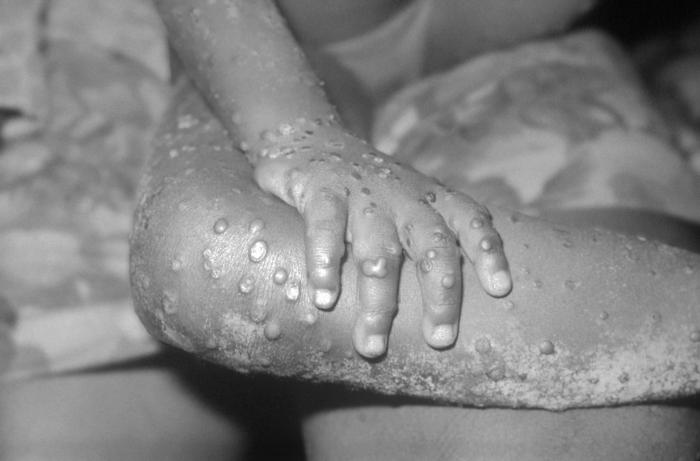At least 20 suspected monkeypox cases have been reported since the beginning of the week in Tshuapa district, Democratic Republic of the Congo, according to a Radio Okapi report today (computer translated).
Sources say that 18 of the suspect cases are hospitalized at a hospital in the town of Ikela. Despite not being laboratory confirmed, the Chief Health officer in the Mbamba health area, Dr Jean-Pierre Inonga said they are calling the cases monkeypox based of several telltale symptoms presented– fever, scabs and generalized skin rash .
Confirmation testing is being performed at the National Institute of Biomedical Research (INRB) in Kinshasa as of this writing.
The resurgence of the viral disease is believed to be due to consumption of game animals found dead in the forest by the public.

Monkeypox is a relatively rare disease caused by the virus with the same name, which is found primarily in central and western Africa.
It is closely related to the smallpox virus (variola), the virus used in the smallpox vaccine (vaccinia), and the cowpox virus.
Infection with monkeypox is not as serious as its cousin, smallpox; however, human deaths have been attributed to monkeypox.
According to the CDC, the symptoms of monkeypox are as follows: About 12 days after people are infected with the virus, they will get a fever, headache, muscle aches, and backache; their lymph nodes will swell; and they will feel tired. One to 3 days (or longer) after the fever starts, they will get a rash. This rash develops into raised bumps filled with fluid and often starts on the face and spreads, but it can start on other parts of the body too. The bumps go through several stages before they get crusty, scab over, and fall off. The illness usually lasts for 2 to 4 weeks.
Rodents, such as rope squirrels, door mice and pouched rats, are the suspected reservoir hosts, with monkeys and humans as secondary, spill-over hosts.
People at risk for monkeypox are those who get bitten by an infected animal or if you have contact with the animal’s rash, blood or body fluids. It can also be transmitted person to person through respiratory or direct contact and contact with contaminated bedding or clothing.
There is no specific treatment for monkeypox.
Robert Herriman is a microbiologist and the Editor-in-Chief of Outbreak News Today and the Executive Editor of The Global Dispatch
Follow @bactiman63
Related:


5 thoughts on “Suspected monkeypox outbreak reported in DRC”